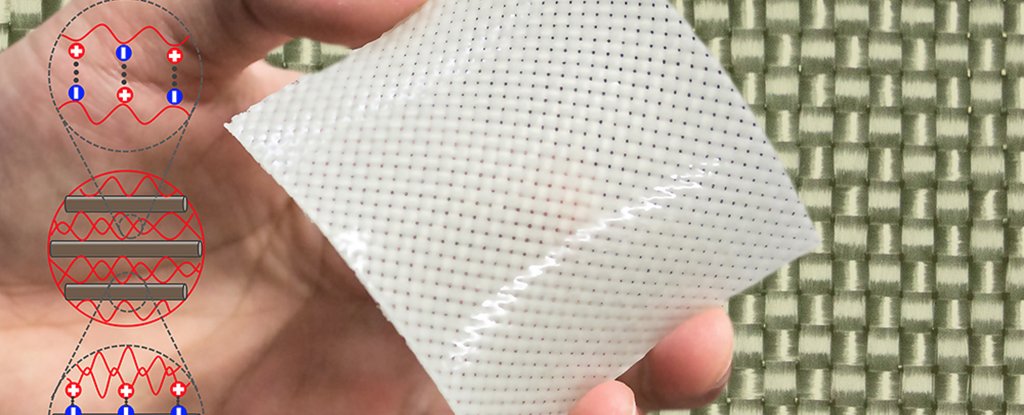That combination of properties means the new fabric could be used as the basis for artificial ligaments and tendons designed to help the body heal – or in manufacturing or fashion where a very tough but elastic material is needed.
Researchers from Hokkaido University in Japan developed the fabric, called fibre-reinforced soft composite(or FRSC), by combining hydrogels containing high levels of water with glass fibre fabric.
"The material has multiple potential applications because of its reliability, durability and flexibility," says one of the researchers, Jian Ping Gong.
Putting two natural materials together to combine their properties is a trick people have been pulling off for a very long time – straw and mud go together to make bricks, and paper and glue gives you papier-mâché.
The idea is you end up with a new super-material that combines the best parts of both your source materials.
The scientists set out to create a substance that could bear heavy loads and was also very fracture-resistant, taking the best characteristics of hydrogels, but adding extra durability and toughness through the glass fibre fabric.
The team says the incredible strength of the composite material comes from dynamic ionic bonds – atoms attracted to each other as electrons get swapped – acting between the fibre and the hydrogels, and within the hydrogels themselves.
As the scientists increased the toughness of the hydrogels in the lab, the overall toughness of the composite material went up too.
These same principles could also be applied to add toughness to other soft components, such as rubber, the researchers say, building on previous studies of hydrogels carried out at Hokkaido University.
The end result is a material that's 25 times tougher than glass fibre fabric; 100 times tougher than hydrogels; and five times as strong as carbon steel, in terms of the energy required to break them.
While hydrogels have already been touted as suitable materials for healing wounds and building soft robots, their lack of toughness has previously limited their usefulness – something which the new research could change.
"This work provides a good guide toward the design of FRSCs with extraordinary fracture resistance capacity," the researchers write in their paper.
The findings are published in Advanced Functional Materials.




























